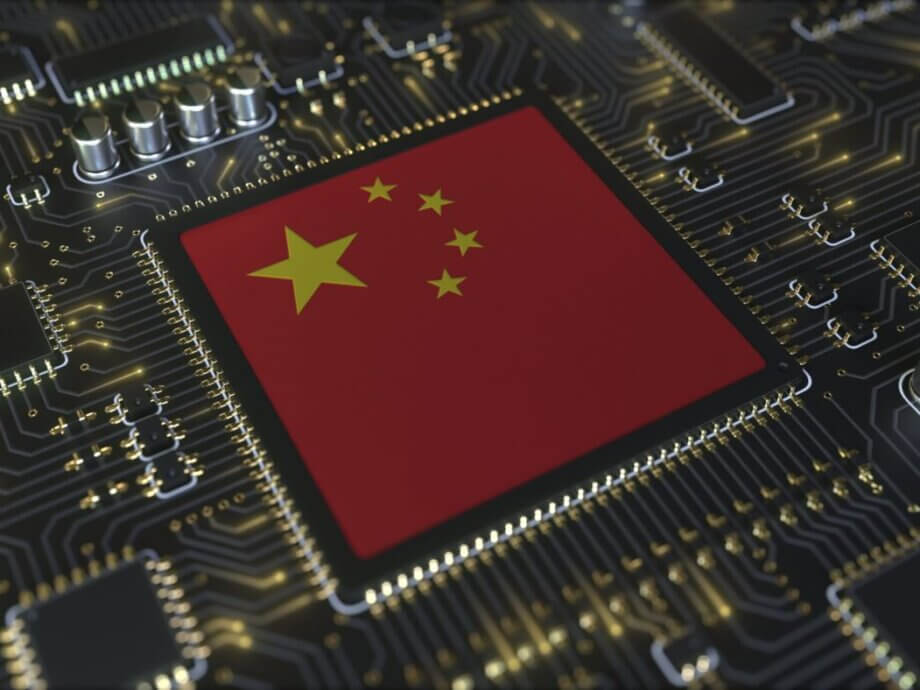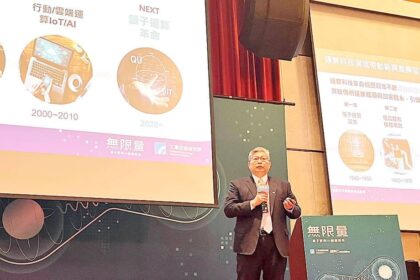China’s Photonic Chip Milestone: A New Era in Semiconductor Innovation
China has marked a significant milestone in its quest for technological self-reliance with the launch of large-scale photonic chip production by an institute affiliated with Shanghai Jiao Tong University. This development, centered at the Chip Hub for Integrated Photonics Xplore (CHIPX) in Wuxi, Jiangsu province, signals a leap forward for China’s semiconductor sector, particularly in the face of intensifying US export controls. The move not only bolsters China’s ambitions in quantum computing and high-speed optical communications but also highlights the country’s broader strategy to overcome foreign technology restrictions and foster homegrown innovation.
- China’s Photonic Chip Milestone: A New Era in Semiconductor Innovation
- What Are Photonic Chips and Why Do They Matter?
- Inside China’s Photonic Chip Production: The CHIPX Initiative
- US Export Controls: The Catalyst for China’s Semiconductor Push
- China’s Broader Semiconductor Strategy: From R&D to Talent Development
- Challenges and Limitations: The Road Ahead for China’s Photonic Chips
- Broader Implications: The Global Race for Quantum and AI Leadership
- In Summary
What Are Photonic Chips and Why Do They Matter?
Photonic chips, also known as photonic integrated circuits, represent a transformative shift in how information is processed and transmitted. Unlike traditional electronic chips that use electrons, photonic chips harness the power of light particles (photons) to carry data. This fundamental difference offers several advantages:
- Speed: Light travels faster than electricity, enabling much higher data transmission rates.
- Energy Efficiency: Photonic chips generate less heat and consume less power, making them ideal for data centers and high-performance computing.
- Bandwidth: They can handle vast amounts of data simultaneously, crucial for next-generation networks like 5G and 6G.
Applications for photonic chips are wide-ranging, including quantum computing, data communications, autonomous vehicles, biomedical technology, defense, and aerospace. Their ability to process and transmit information at unprecedented speeds makes them a cornerstone for future technologies.
Inside China’s Photonic Chip Production: The CHIPX Initiative
The CHIPX facility in Wuxi began operations in September 2023 and has quickly gained recognition as a “key national pilot platform” by China’s Ministry of Industry and Information Technology. The institute now produces 6-inch thin-film lithium niobate photonic chip wafers, with an annual capacity of 12,000 wafers—each yielding about 350 chips. This scale of production is a first for China and positions CHIPX as a leader in domestic photonic chip manufacturing.
Jin Xianmin, director of CHIPX, emphasized the strategic importance of the project, stating that the integrated production line combines research and development, process validation, and scalable manufacturing. He described the achievement as “a further enhancement in China’s self-reliance and global competitiveness in quantum technologies.”
The platform is designed not only for manufacturing but also for sharing design and processing expertise with industry partners. This collaborative approach aims to accelerate the commercial adoption of photonic chips across sectors such as 5G, 6G, artificial intelligence (AI) data centers, and quantum computing networks. Additionally, the initiative is expected to support Wuxi’s ambitions to become a hub for AI development and to address bottlenecks in computing power.
US Export Controls: The Catalyst for China’s Semiconductor Push
The backdrop to China’s photonic chip breakthrough is a rapidly evolving landscape of US export controls targeting advanced semiconductors and chipmaking tools. Since 2018, the US has placed major Chinese technology firms—including Huawei, Semiconductor Manufacturing International Corporation (SMIC), and others—on trade blacklists, restricting their access to critical foreign technologies. These measures have been expanded under both the Trump and Biden administrations, with new rounds of export controls and tariffs affecting not only companies but also research institutions and universities.
These restrictions have forced China to accelerate its investments in alternative technologies, such as compound semiconductors, photonics, and quantum computing. The government has responded by fostering greater cooperation across supply chains, increasing R&D spending, and encouraging the establishment of pilot production lines and research centers nationwide.
State-Backed Labs and Pilot Production Lines: China’s Strategic Response
Chinese chipmakers and equipment manufacturers, many of whom are blacklisted by the US, have increasingly turned to state-backed laboratories and university-affiliated pilot production lines to continue their development efforts. Facilities in cities like Wuhan, Wuxi, and Ningbo provide vital test production and verification services, often enjoying more flexible access to overseas technology than commercial entities.
For example, Hubei Yangtze Memory Labs in Wuhan allows engineers from Yangtze Memory Technologies (YMTC) to verify new chip designs before mass production. Similarly, JFS Laboratory in Wuhan specializes in compound semiconductors and silicon photonics, attracting top scientific talent from around the world. These labs play a crucial role in benchmarking equipment, validating new materials, and supporting the development of next-generation technologies.
China’s Broader Semiconductor Strategy: From R&D to Talent Development
China’s approach to overcoming US curbs is multifaceted. Beyond ramping up production capacity, the country is investing heavily in research and development, talent cultivation, and the creation of industry clusters. According to the National Bureau of Statistics, China’s R&D spending reached over RMB 3.3 trillion (USD 458 billion) in 2023—nearly double the level in 2017. This surge in investment is matched by a wave of new semiconductor schools at leading universities, including Shanghai Jiao Tong University, Nanjing University of Aeronautics and Astronautics, and others.
These educational initiatives are designed to broaden access to fundamental technologies and cultivate a new generation of homegrown talent. The specialties of these programs span electronics automation design, chip production equipment, and advanced chip manufacturing, all aimed at reducing reliance on foreign expertise.
Innovation in Chip Design: The Role of Artificial Intelligence
In addition to hardware advances, China is making strides in chip design automation. The Chinese Academy of Sciences (CAS) recently unveiled QiMeng, an AI-driven chip design system capable of automating the entire integrated circuit design process. QiMeng leverages large language models to match the performance and efficiency of chips designed by human experts, significantly reducing development time and costs.
This innovation is particularly timely as the US has pressured leading electronic design automation (EDA) software suppliers to halt sales to China, further complicating access to essential design tools. By developing domestic alternatives like QiMeng, China aims to maintain momentum in semiconductor innovation despite external constraints.
Challenges and Limitations: The Road Ahead for China’s Photonic Chips
Despite these advances, China’s photonic chip industry faces significant hurdles. According to a report by Chinese consultancy AskCI, the market for photonic chips in China was projected to reach about 15.2 billion yuan (US$2.1 billion) in 2024, up from 13.8 billion yuan in 2023. However, the localization rate for the supply chain of some advanced photonic chips remains below 5 percent, indicating a heavy reliance on imported materials and equipment for certain critical components.
Moreover, while research institutes and universities are generally subject to fewer trade restrictions, they are not immune from political tensions. The US has placed several leading Chinese universities on its Entity List, requiring stricter reviews for exports and collaborations. Europe, too, is beginning to scrutinize research partnerships with China more closely, raising concerns about research security and technology transfer.
Expert Perspectives: Innovation Amid Strategic Pressure
Industry experts caution against underestimating China’s capacity for innovation, even in the face of inefficiencies and overcapacity in its state-driven system. Stephen Ezell, vice president for global innovation policy at the Information Technology and Innovation Foundation, notes:
“In all sectors and in overall expenditure, China [has] neared the US in R&D spending. If China continues to invest heavily and if the US finds its budgetary environment constrained, it’s certainly possible China could outstrip the US.”
Mathieu Duchatel, director of international studies at Institut Montaigne, adds that the intense strategic pressure from the US and its allies is a significant mobilizing force for China’s innovation drive:
“People should not underestimate China’s capacity for innovation just because of inefficiencies in its state-driven system. The intense strategic pressure on China from the US and its allies is also a significant mobilizing force.”
Broader Implications: The Global Race for Quantum and AI Leadership
The successful mass production of photonic chips in China has far-reaching implications for the global technology landscape. Photonic chips are essential for the development of quantum computers, which promise to revolutionize fields ranging from cryptography to drug discovery. They are also critical for the next generation of AI data centers, enabling faster and more efficient processing of massive datasets.
China’s progress in this area challenges the traditional dominance of Western and East Asian semiconductor giants, such as TSMC and Samsung. While Chinese firms still lag behind in certain advanced manufacturing processes, their rapid advances in photonics, AI-driven chip design, and alternative semiconductor materials suggest a narrowing technology gap.
At the same time, the global semiconductor supply chain remains highly interconnected. Even as China pushes for self-sufficiency, it continues to rely on imported equipment and materials for some aspects of chip production. Ongoing geopolitical tensions and export controls are likely to shape the evolution of the industry for years to come, with both risks and opportunities for innovation on all sides.
In Summary
- China has launched large-scale production of photonic chips at the CHIPX facility in Wuxi, marking a major milestone in its semiconductor sector.
- Photonic chips use light to process and transmit information, offering advantages in speed, energy efficiency, and bandwidth over traditional electronic chips.
- The breakthrough comes amid intensified US export controls, which have spurred China to invest heavily in alternative technologies, R&D, and talent development.
- State-backed labs and university-affiliated pilot production lines play a crucial role in supporting domestic chip innovation and overcoming foreign technology restrictions.
- China faces ongoing challenges, including low localization rates for advanced photonic chip supply chains and increased scrutiny from the US and Europe.
- Innovations like the AI-driven QiMeng chip design system demonstrate China’s commitment to reducing reliance on foreign technology and accelerating semiconductor development.
- The global race for leadership in quantum computing and AI is intensifying, with China’s advances in photonic chips reshaping the competitive landscape.












